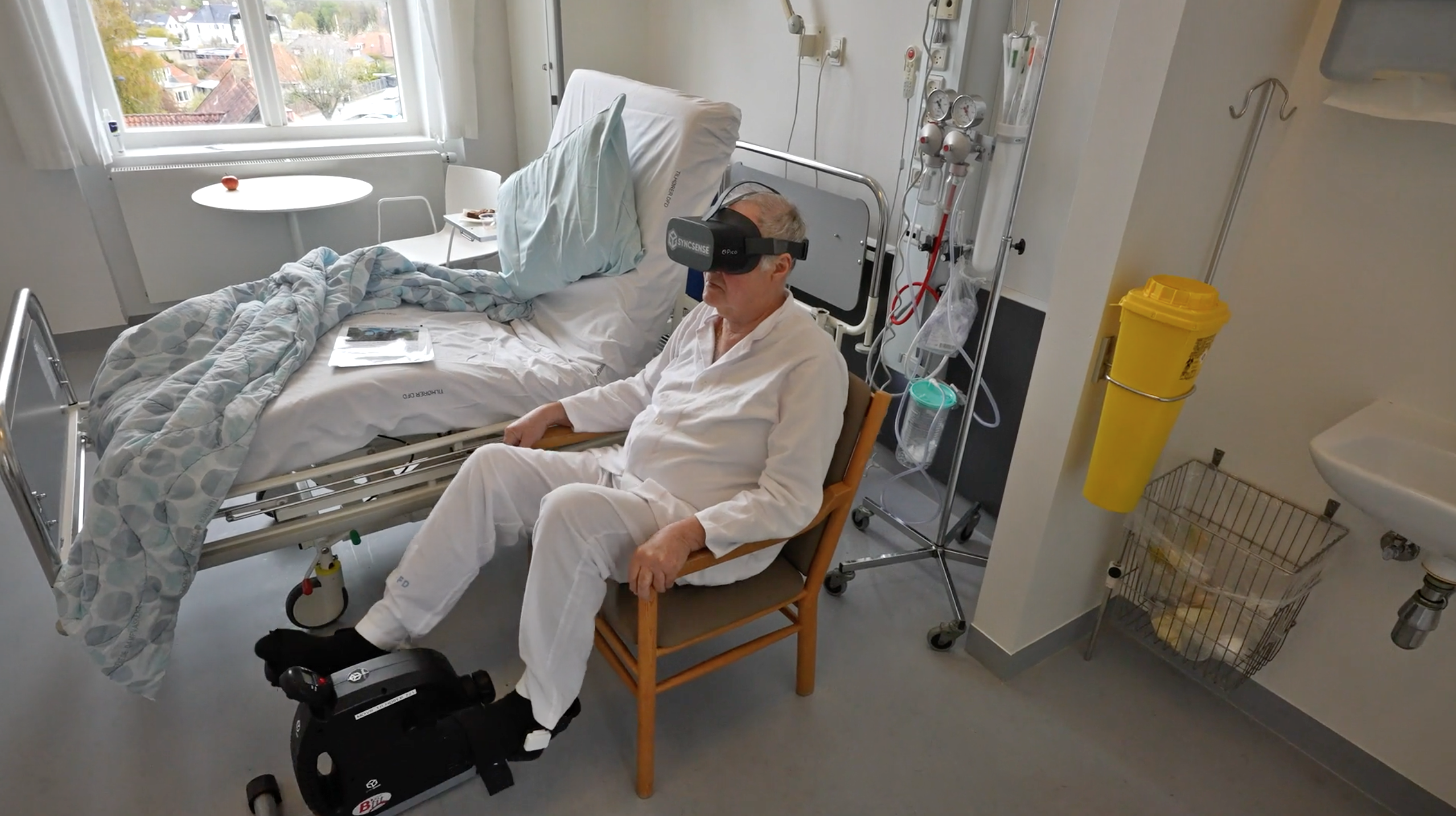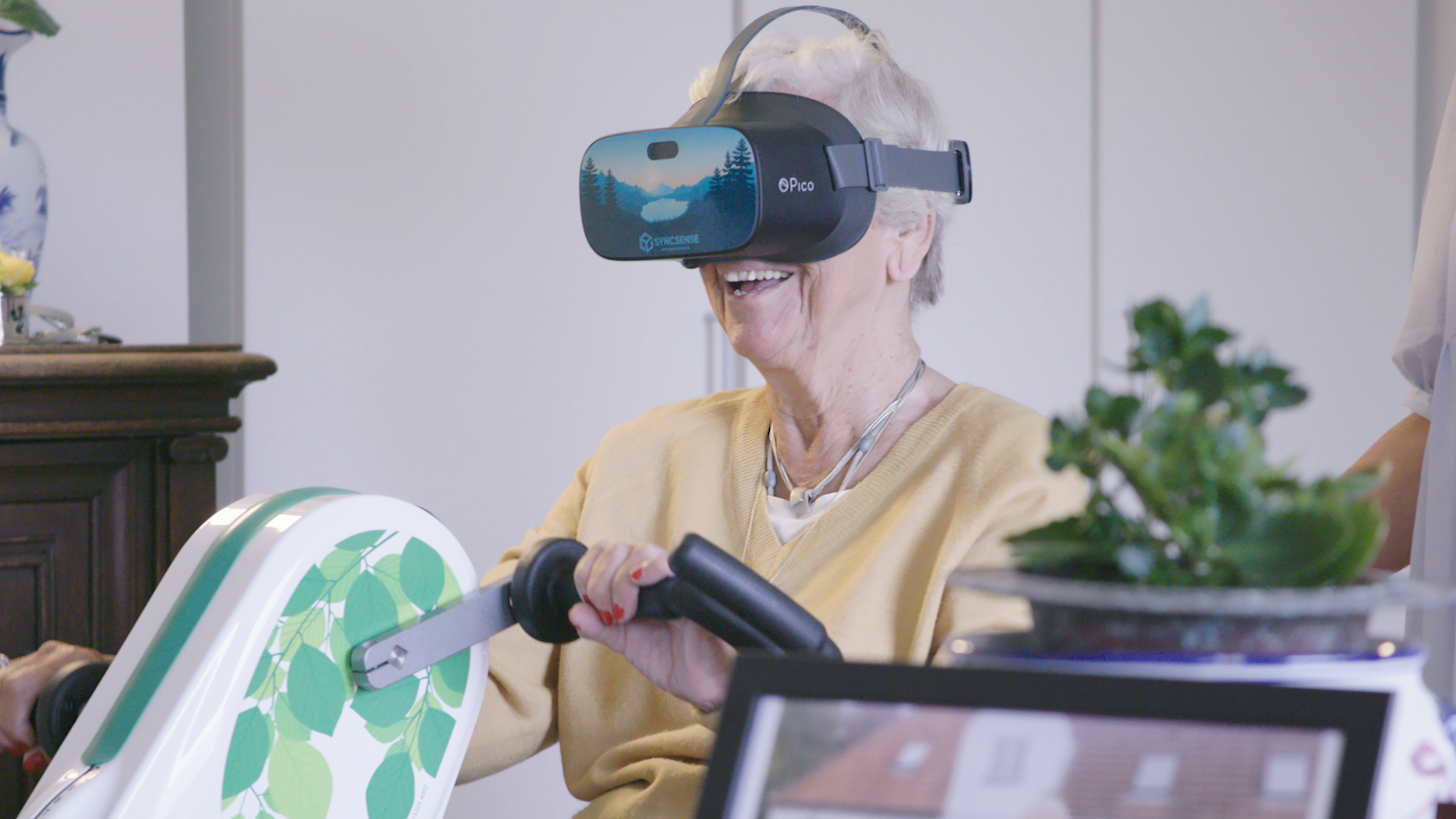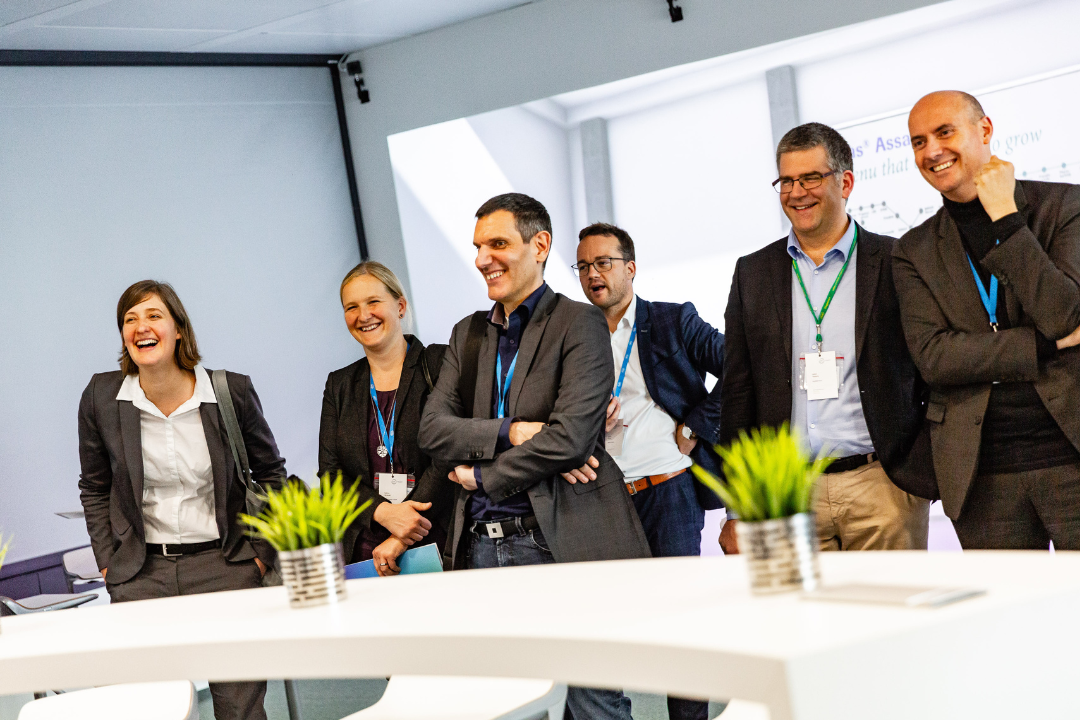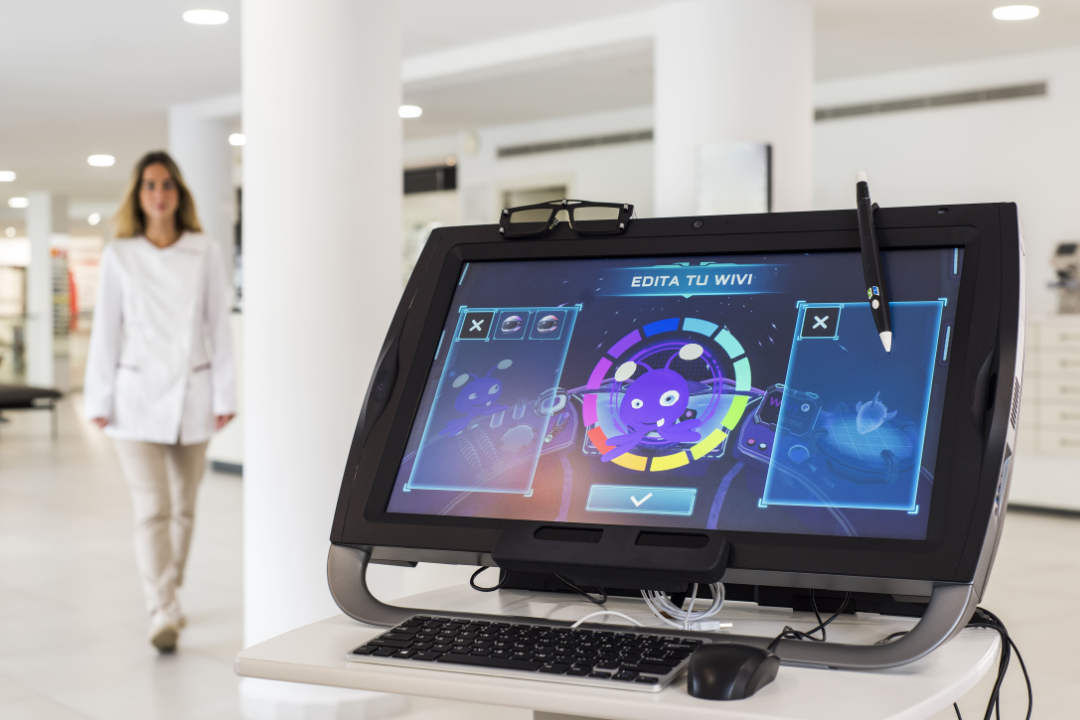7th December 2021
With an intelligent AI-driven motion sensor and a VR platform, Syncsense transforms exercise equipment into engaging and adaptive exergaming experiences. This combination of exercise and gaming prevents and treats diseases related to physical inactivity and aging.
When Simon Bruntse Andersen witnessed the final stage of his grandparents’ lives as they withered away in their hospital beds, a long time ago, it had a lasting impact and has inspired him to think of solutions how to mitigate the damage institutionalisation can have on the frail and elderly.
VR exercise prototype with a special focus on eldery
With support from EIT Health’s Headstart program in May, 2020 Simon and Steen Petersen, an experienced physical therapist and software developer, started developing a VR exercise prototype. With a special focus on eldery in nursing homes and hospitals, a solution connecting people to nature outside. The VR intervention activates the body, brain, and mind while giving patients an escape, allowing them to move their bodies and simultaneously be transported virtually outside.
The initial prototype was co-created with Herlev-Gentofte Hospital. Following that, prototyping started in co-creation with other nursing homes and rehab centers in Denmark. The product was launched on the Danish market at the end of 2020, with evidence conducted from several pilot tests in hospitals, nursing homes and rehab centers.
The VR solution has various sceneries to pick from, such as walking in a forest filled with birdsong or a beach with the sound of waves hitting the rocks and sand while stepping on the pedals of a bicycle. The product can be used while lying down, sitting, or standing depending on the selected exercise equipment.
Syncsense combines visual sensory stimulation and physical exercise with gamified elements and gives bedridden patients a meaningful, active experience with less anxiety, boredom and depression.
Inactivity has serious consequences for hospitalised and bedridden patients
In Denmark patients over the age of 65 account for more than 50% of hospital admissions. A significant portion of these patients lie in bed more than 22 hours per day during their hospitalisation1. Elderly patients spend on average of 70-90% of their in-hospital time in bed and only 3-5% standing or walking2. This weakens their bones, muscles and cardio-vascular system. This lack of something meaningful to participate in leads to boredom and a general loss of motivation.
This inactivity has especially serious physical and mental consequences for hospitalised and bedridden patients, but also for elderly citizens in general. Research has shown that even short periods of inactivity result in a decrease of general condition and muscle mass. Elderly patients are further affected due to a reduced ability to recover. It also affects the patients’ activities of daily life (ADL) and reduces quality of life. In addition, physical inactivity can prolong illness and rehabilitation time, and increase the risk of sequelae and re-institutionalisation3.
Validating the effects of VR through living lab testing
Syncsense collaborates with universities and researchers with the purpose to assess and document the effects of VR exercise. In an randomised controlled trial (RCT) last year, on elderly inpatient rehabilitation post-hospitalisation, a research group from University of Copenhagen showed that the elderly had a positive experience of VR exercise, and that the group who intervened with VR cycling had a significant increase in quality of life compared to the group who cycled without VR. Syncsense is currently performing their second RCT where the aim is to assess the effect of physical activity for elderly hospitalised patients.
From the beginning, Syncsense has established Living Labs in hospitals, nursing homes and rehab centers in Denmark. With an introduction from EIT Health they have also tested the solution in a Swedish nursing home in order to develop a market-ready product with high added value and a high probability of success. As the pilot shows great results4 and the VR solution also seems implementable in Sweden.
– EIT Health really kickstarted our journey when it comes to development of our innovation and initiating commercialisation of it. They have been a crucial teamplayer for us to succeed both when it comes to research and development – but also when it comes to market access.
– Through EIT Health’s partnerships we were introduced to a Swedish nursing home where we got a living lab established in order to catalyze internationalisation.
Simon Bruntse Andersen, CEO Syncsense

The use of Living Labs and open innovation ecosystems with stakeholders, including patients, citizens, and health professionals, cooperating on developing solutions, has helped Syncsense to validate the market need. Hospitals, nursing homes, and rehab centers can now use the VR platform daily to make a positive impact.

– VR exercise helps us actively to reduce physical inactivity and immobilisation in a new and smart way. I believe the patients gets a better experience while hospitalised and that VR exercise potentially could reduce the length of hospitalisations,
Marlene Kongstad Blomstrøm Poulsen, department nurse at Gentofte Hospital
Over the last two years Syncsense has been awarded both nationally and internationally. Through one of EIT Health’s programs they were recently declared one of the winners of the inaugural round of NAM Healthy Longevity QuickFire Challenge supported by Johnson & Johnson Innovation and on 1 December they won the Danish AI Award.
– We are transforming the exercise equipment into engaging and adaptive exergaming experiences with the first solution of its kind Today, we have validated our product on the Danish and Swedish market and are about to cross international borders and are looking for a strategic partnership or distributor to accelerate the development and market access of our life-enhancing solution.
Simon Bruntse Andersen, CEO Syncsense (left) and Steen Petersen, CTO (right)

SELECTED AWARDS :
Danish AI Awards, organised by AI Denmark funded by the Danish Industry Foundation
Healthy Longevity Catalyst Awards part of the Global Healthy Longevity Global Competition, a multiyear, multimillion-dollar international competition seeking breakthrough innovations to extend human health and function later in life.
NAM Healthy Longevity QuickFire Challenge Syncsense recently advanced in the Healthy Longevity Catalyst Awards competition resulting in Johnson & Johnson Innovation selecting Syncsense as an awardee. The prize is a grant funding up to USD 750 000 with access to the global Johnson & Johnson Innovation – JLABS network and mentorship.
Nomination:
EY Entrepreneur of the year in the category of Social Entrepreneurship.
Twenty-four-hour mobility during acute hospitalization in older medical patients https://pubmed.ncbi.nlm.nih.gov/22972940/
In acutely admitted geriatric patients, offering increased physical activity during hospitalization decreases length of stay and can improve mobility https://onlinelibrary.wiley.com/doi/abs/10.1002/tsm2.2
Prevalence and outcomes of low mobility in hospitalized older patients https://pubmed.ncbi.nlm.nih.gov/15271112/
Innovation Verklighetslabbet Syncsense https://www.verklighetslabbet.se/projekt/syncsense
EIT Health: Empowering innovators from ideas to impact

Find support for your innovation.
Deep Tech Venture Builder: Accelerating solutions from research to market

Learn to overcome the 'valley of death'.
